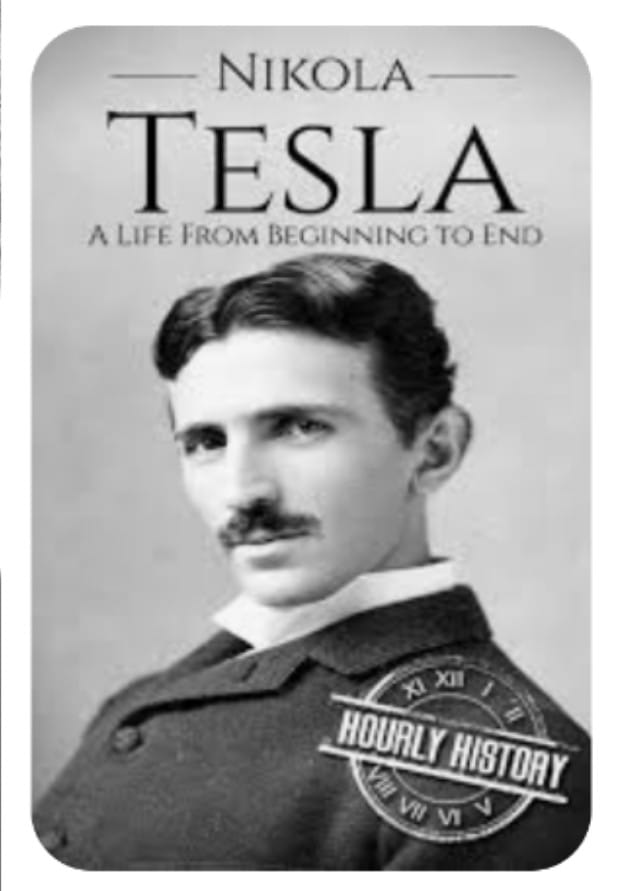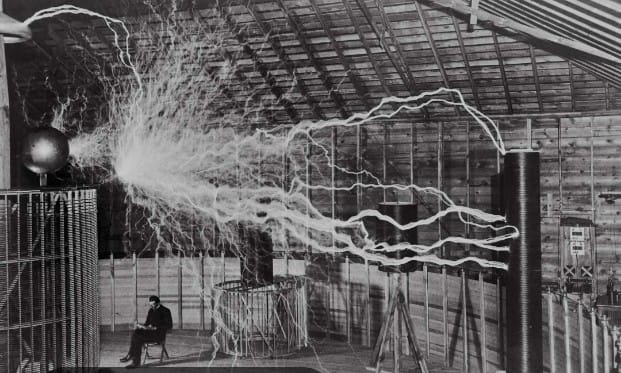


Nikola Tesla: Visionary Genius of the Electrical Age
Introduction:
Nikola Tesla, a name synonymous with brilliance, innovation, and visionary thinking, revolutionized the world with his pioneering work in electricity and engineering. Born on July 10, 1856, in Smiljan, Croatia (then part of the Austrian Empire), Tesla’s life journey would be marked by groundbreaking discoveries, fierce determination, and a relentless pursuit of scientific advancement. This is the biography of a man whose ideas shaped the modern world and whose legacy continues to inspire generations.
Early Life and Education:
From a young age, Tesla exhibited an insatiable curiosity and an exceptional intellect. Raised in a family of Serbian descent, he was deeply influenced by his father, an Orthodox priest, who encouraged his interest in science and mathematics. Tesla’s early education took him to the Technical University of Graz in Austria and later to the University of Prague, where he studied electrical engineering.
Career Beginnings:
In 1884, Tesla immigrated to the United States, carrying with him little more than his dreams and a mind teeming with revolutionary ideas. He soon found employment with Thomas Edison, but their professional relationship was short-lived due to conflicting approaches to innovation. Undeterred, Tesla went on to establish his own laboratory and embarked on a journey that would forever change the course of history.
Inventions and Contributions:
Tesla’s contributions to science and technology are nothing short of extraordinary. He developed the alternating current (AC) electrical system, which laid the foundation for modern power distribution and transmission. His invention of the induction motor revolutionized industrial processes, making possible the widespread use of electricity in manufacturing. Tesla also made significant advances in wireless communication, X-ray technology, and robotics, among other fields.
Struggles and Setbacks:(Nikola tesla)
Despite his brilliance, Tesla faced numerous challenges throughout his life. Financial difficulties often plagued him, and his ambitious projects sometimes met with skepticism from the scientific community. Nevertheless, he persisted in his pursuits, driven by an unwavering belief in the power of his ideas to shape the future.
Legacy and Recognition:(Nikola Tesla)
Nikola Tesla’s legacy extends far beyond his lifetime. His inventions have had a profound impact on virtually every aspect of modern life, from the way we light our homes to the way we communicate across vast distances. Although he did not always receive the recognition he deserved during his lifetime, Tesla’s contributions to science and engineering have since been widely celebrated, earning him a place among the greatest minds in history.
Conclusion:(Nikola Tesla)
Nikola Tesla’s life is a testament to the transformative power of human imagination and ingenuity. His boundless creativity, coupled with his tireless dedication to scientific inquiry, continue to inspire generations of inventors, engineers, and innovators. As we marvel at the wonders of the modern world, let us never forget the man whose visionary genius helped to shape it.
Nikola Tesla, a renowned inventor and engineer, made numerous groundbreaking contributions to the fields of electrical engineering and physics during the late 19th and early 20th centuries. Some of his most notable inventions and contributions include:
1. Alternating Current (AC) System: Tesla’s most significant contribution was the development and promotion of the alternating current (AC) electrical system. This system enabled the long-distance transmission of electricity efficiently and safely, revolutionizing the way electrical power is distributed and used.
2. Tesla Coil: Tesla invented the Tesla coil, a high-voltage transformer that produces high-frequency alternating currents. The Tesla coil is widely used in radio technology and has become an iconic symbol of his work.
3. Induction Motor: Tesla designed the first practical alternating current (AC) induction motor, which is widely used in various applications, including industrial machinery, household appliances, and electric vehicles.
4. Wireless Transmission of Electricity: Tesla conducted experiments in wireless power transmission, envisioning a world where electricity could be transmitted wirelessly over long distances. Although he never fully realized this vision, his work laid the foundation for future advancements in wireless communication and power transfer technologies.
5. Remote Control: Tesla developed the principles of remote control, demonstrating the first remote-controlled boat in 1898 at an exhibition in Madison Square Garden, New York. His work laid the groundwork for the development of modern remote control technology.
6. Tesla Turbine: Tesla invented the Tesla turbine, a bladeless turbine design that utilizes boundary layer effects to generate power. While not widely adopted for large-scale applications, the Tesla turbine has found niche uses in certain industries, such as automotive and aviation.
7. Tesla Oscillator: Tesla patented the Tesla oscillator, a mechanical device capable of producing high-frequency vibrations. He proposed various applications for the oscillator, including earthquake detection and mechanical power generation.
8. X-ray Experiments: Tesla conducted early experiments with X-rays and contributed to the development of X-ray technology. However, his contributions in this field are often overshadowed by the work of other scientists, such as Wilhelm Conrad Röntgen, who is credited with the discovery of X-rays.
These are just a few examples of Nikola Tesla’s many inventions and contributions to science and technology. His work continues to inspire and influence researchers and engineers around the world.
Nikola Tesla’s education played a significant role in shaping his career as an inventor and engineer. Here’s an overview of his schooling:
1. **Early Education in Serbia:**Nikola Tesla was born on July 10, 1856, in Smiljan, which was then part of the Austrian Empire (now in Croatia). He attended primary school in his hometown and demonstrated an aptitude for mathematics and science from a young age.
2. **Graz University of Technology:** In 1875, Tesla enrolled at the Austrian Polytechnic in Graz (now known as the Graz University of Technology) to study electrical engineering. He excelled in his studies, but his interest in alternating current (AC) systems clashed with the curriculum, which focused on direct current (DC) technologies.
3. **University of Prague:** After a year at Graz, Tesla transferred to the University of Prague (now the Czech Technical University in Prague) to continue his studies in electrical engineering. However, financial difficulties and a lack of support for his ideas led him to leave the university without completing his degree.
4. **Self-Education and Independent Study:** Despite not obtaining a formal degree, Tesla continued to educate himself through extensive reading and independent study. He was deeply interested in physics, mathematics, and electrical engineering and spent much of his time conducting experiments and developing his ideas.
5. **Move to the United States:** In 1884, Tesla immigrated to the United States, where he began working for Thomas Edison’s Edison Machine Works. Although he had no formal education beyond his time in European universities, Tesla’s practical knowledge and inventive abilities quickly became evident.369
6. **Practical Experience and Mentorship:** Tesla gained valuable practical experience working in various capacities within the burgeoning electrical industry in the United States. He also had the opportunity to collaborate and learn from other prominent inventors and engineers, including Thomas Edison and George Westinghouse.
7. **Independent Research and Invention:** Throughout his career, Nikola Tesla continued to engage in independent research and experimentation, often conducting his work in private laboratories. His relentless pursuit of innovation and his unconventional approach to problem-solving led to numerous groundbreaking inventions and discoveries.
Despite not having a formal degree, Nikola Tesla’s schooling provided him with a strong foundation in electrical engineering and science. His self-directed education, combined with his innate curiosity and inventive spirit, propelled him to become one of the most influential figures in the history of technolog
Nikola Tesla was a pioneering inventor and engineer known for his groundbreaking contributions to electrical engineering, including the development of alternating current (AC) systems, the Tesla coil, and numerous other inventions that revolutionized the modern world.
Yes, Nikola Tesla did extensive work throughout his lifetime. He made significant contributions to electrical engineering, physics, and numerous other fields. Some of his notable works include the development of alternating current (AC) systems, the invention of the Tesla coil, pioneering research in wireless communication and wireless energy transmission, advancements in electric motors, and various other inventions and innovations that continue to impact technology today.
